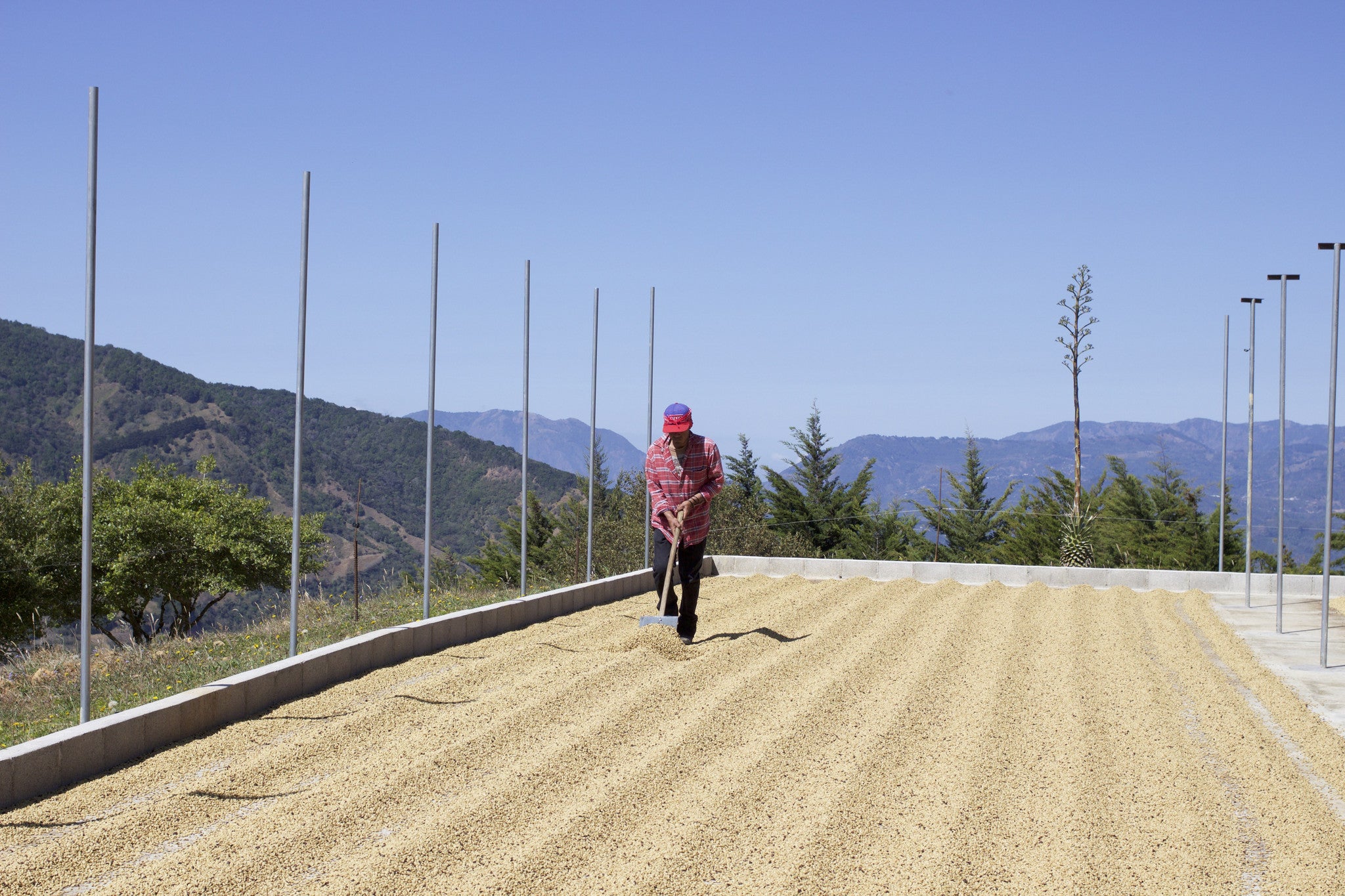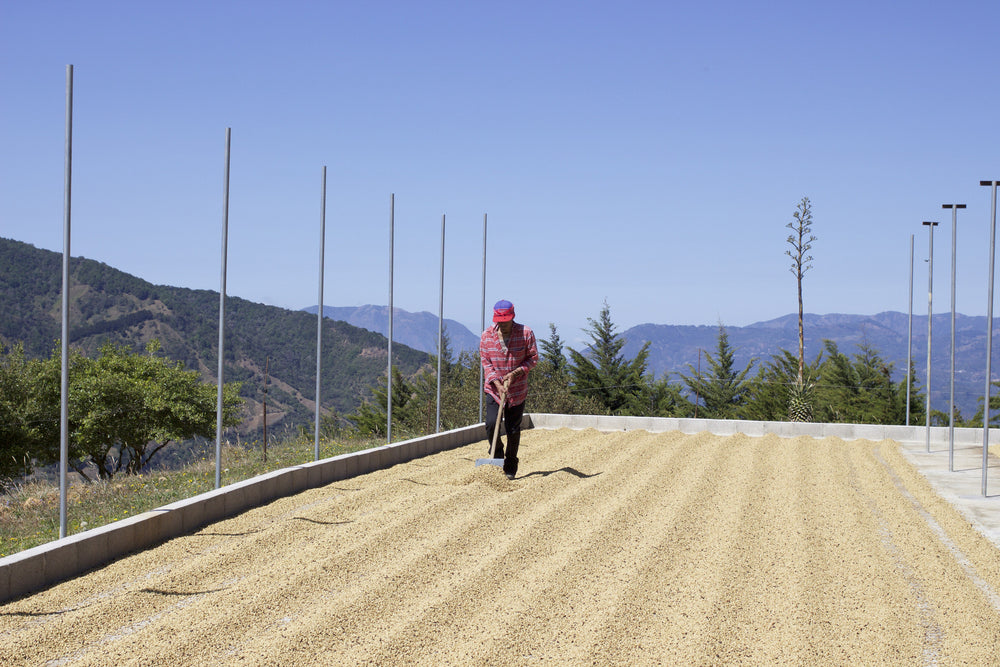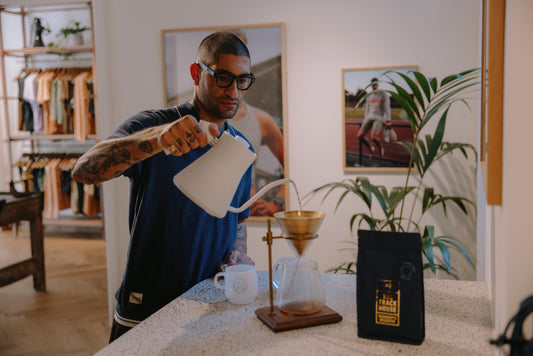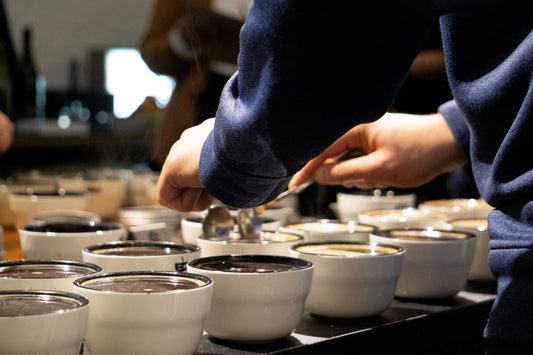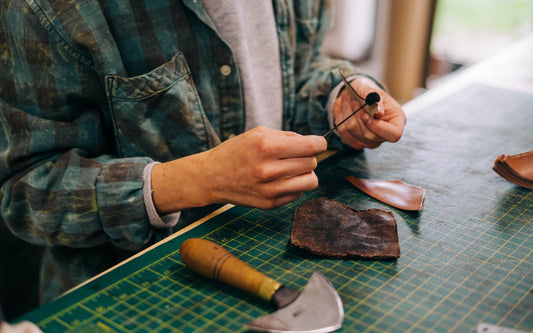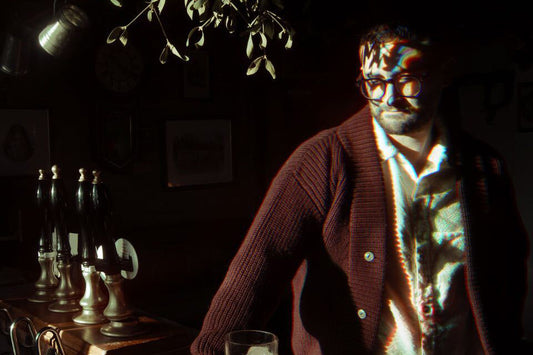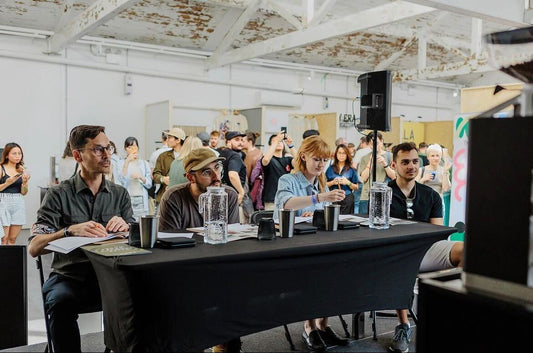Last year when we visited Costa Rica we got to taste some fantastic coffees, but we had little opportunity to get out of the cupping lab and into the field. It's a remarkable country with a lot of very unique and special lots of coffee available from single producers, and there are a multitude of processing methods being undertaken.
A lot more affluent than other countries in Central America, it has considerably greater access to finance and an entrepreneurial streak in its producers’ mentality that means that there are a lot of micro-mills or benefices that see a producer not just growing, but also processing and drying their coffees. This control over every stage means that they're able to produce some very high quality lots, build up their brand and reputation as a quality producer and get paid premiums for their extra effort, skill, understanding and hard work.
We were travelling with our friends at Nordic Approach, who have recently employed Marianela to be a permanent staff member on the ground in Costa Rica. Part of a family that have two coffee farms and do their own processing and drying, Marianela is charged with building relationships with producers in Tarrazú who want to improve the quality of their coffees.
Our first day started with cupping around 200 bowls of coffee to get a ‘lay of the land’. As we were visiting quite early in the harvest, the higher altitude lots of coffee were still ripening and so we tasted the earlier pickings to get a sense of what the quality is going to be like this season. A variety of preps and a very wide range of quality levels was fun to taste through, but inevitably led to a lot of palate fatigue (remedied with a couple of evening beers).

The next day we were driving through the Dota valley, towards San Marcos in Tarrazú, to visit Marianela’s family’s beneficio, Don Eli. As well as growing coffee and sugar cane, they have their own processing equipment, raised beds (a good portion under tarpaulin to provide shade, with open sides to offer ventilation) a coffee nursery and a gathering space that would go on to be used that evening for a party with lots of producers from the area.

The sun was not yet fully up and they would only begin to uncover the non-shaded raised beds once they were in sunlight, as overnight the temperatures drop considerably, meaning a lot more humidity in the air first thing. We saw several lots of single varieties, separated out, and a variety of different honey preparations, naturals and fully washed parchment. They were also trying a ‘double soaked’ experiment by lining a big silo with tarpaulin and soaking the washed coffee under clean water overnight. From there, they'd stir it up with a spade to break down the residual mucilage, drain the soak water and then dry the even cleaner parchment.


We saw a delivery of cherry arrive, the back of a truck loaded with many cajuela’s worth of cherry. In Costa Rica the pickers are paid by the cajuela, or bucket, a volumetric system, rather than weight. Picking commodity coffeee to be sold to the large cooperatives in Tarrazú will be worth around 1,000 Colones per cajuela (equates to roughly £1.50), whereas at Don Eli they are paying at least a 30% premium for more selective picking, accepting only ripe cherries. It is very difficult to select solely ripe cherries when there are varieties planted which ripen to different colours. A mixture of Catuaí Rojo and Amarillo (red and yellow) looks scary when you see it all mixed together, as the different hues look at a distance like there is a lot of unripe and semi-ripe cherry mixed in with the ripe.

When they are processing the cherry they first fill a fanega, a cuboid receptacle above the reception tanks, which when its filled with cherry equates to roughly 46kg of exportable green coffee. This way they can keep track of what their outturns may be based on the amount of cherry they buy. From cherry to green coffee that we receive in our roastery, there is about a 5:1 loss of mass.

We continued our journey that day through some outrageously beautiful scenery, listening to the local radio and chatting to Marianela, until we got to ‘Beneficio La Angostura’ to visit Mario Jiminez and his family.
Their set-up and attitude was a masterclass in fantastic practices and attitude. It's rare to see the younger generation want to continue to work in coffee, but Mario’s wife and two daughters are all involved in the coffee production. As well as processing cherry from their own farm they do the processing for three other farmers in the area. 






After a quick stop at Finca La Cuesta to see Mauricio Hermenez’s farm, planted with lots of citrus trees, as well as some very healthy looking coffee trees, we had a minor problem with our truck and had to push it up a crumbly incline in the midday sun.
Back on the road, we continued on to see Beneficio La Cruz and their new drying experiments; stacked up raised beds under a huge tarp greenhouse, and their pine warehouse for storing their top quality lots in VIP conditions. Both farms were looking at replanting sections with hardy varieties like Villalobos and Obata, and were curious at to whether any of us on the trip had good experiences with these varieties from other origins. It is such a complex situation as there are so many other factors at play that we would never suggest that a farmer should or shouldn’t grow a particular type of coffee or do a particular style of processing, as our experience is in roasting and not agronomy. Longer term projects that can be pre-financed and contracted are something that we would be interested in doing with certain producers down the line, but we are very much there to learn from them as much as we can.
After seeing the small farms and micro-mills, we had a slight change of pace checking out the facilities at Montañas del Diamante. Here things are done on a much bigger scale, with some very clean and even drying patios, lots of steel raised beds on wheels, a multi-tiered structure to process greater volumes of coffee, and some slowly rotating, low temperature mechanical dryers working away.

After a long and hot day in the sun seeing a whole variety of farming and processing approaches, we returned to Beneficio Don Eli to meet with some more of the producers that Nordic Approach have been working with, as well as many more who are keen to establish a more direct relationship with their buyers. After some lengthy introductions and a very productive Q&A session with the farmers, we drank some Cacique (a local sugar cane liquor), handed round beers, ate heartily and listened to local music.


One of the farmers in attendance was Roger Ureña. He had recently purchased a farm at 2,000m called Santa Teresa, and was very keen to have us visit and see what he is doing to produce very high quality lots.

For the last few years Roger has been replanting his sizeable farm with lots of different varieties, and is currently producing Catuaí, Typica Mejorado, Bourbon and Villalobos, and a little Geisha, with Pacamara and Rume Sudan varieties fruiting in two harvest’s time.

For the last seven years he has been doing research into other farmers’ micro-mills to learn about the best practices for using eco-pulpers and how to dry the coffee properly when doing a variety of preparations. Their normal protocols see them leaving 10% of the mucilage on after pulping and using the demucilagor, but they are doing some double washed preparations as an experiment this year with a very selective harvest. As well as coffee, he grows avocados and is working with an agronomist towards the end goal of being completely carbon neutral.



Since returning from Costa Rica, we've tasted further pre-shipment samples that have got us rather excited about the quality and variety of coffees coming out of the country this year. We’re really excited to see them arrive in 6-8 weeks’ time and will be available to order shortly after that.
Pura Vida!
Share:


